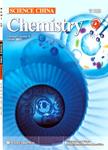Enantioselective copper-catalyzed dearomative borylative cyclization of indoles and mechanistic insights
作者机构:Jilin Province Key Laboratory of Organic Functional Molecular Design & Synthesis Department of Chemistry Northeast Normal University School of Chemistry and Chemical Engineering Harbin Normal University Institute of Functional Material Chemistry Department of Chemistry Northeast Normal University State Key Laboratory of Organometallic Chemistry Shanghai Institute of Organic Chemistry Chinese Academy of Sciences
出 版 物:《Science China Chemistry》 (中国科学:化学(英文版))
年 卷 期:2024年
核心收录:
学科分类:081704[工学-应用化学] 07[理学] 08[工学] 0817[工学-化学工程与技术] 070303[理学-有机化学] 0703[理学-化学]
基 金:supported by the Natural Science Foundation of Jilin Province (20210101134JC) the National Natural Science Foundation of China (22171042, 21831002, 22193012) the Fundamental Research Funds for the Central Universities
摘 要:Alicyclic nitrogen heterocycles, such as enantioenriched polycyclic fused [1,2-a]indoline derivatives, are widespread in natural products, agrochemicals and pharmaceutical agents. Existing methods predominantly rely on the recent emerging Heck-type catalytic asymmetric dearomatization(CADA) protocol, wherein noble palladium catalysts commonly necessitate the form arylPd species-triggered these transformations. In contrast, a more sustainable base metal catalysis paradigm through alkyl metal species disrupting the aromaticity, that is, the utilization of challenging asymmetric Csp3–Csp3bond formation entry to such important chiral densely functionalized polycyclic molecular scaffolds, remains an elusive task. Herein, we report the first copper-catalyzed dearomative borylative cyclization of indoles under mild reaction conditions, affording an array of valuable Bpin-containing pyrrolo-fused [1,2-a]indolines bearing four consecutive stereogenic centers with excellent enantioand diastereoselectivity. The synthetic potential was documented via an array of useful transformations. Density functional theory(DFT) calculation studies elucidated the origin of the chemo-, regio-, enantio-and diastereoselectivities of this conversion.



